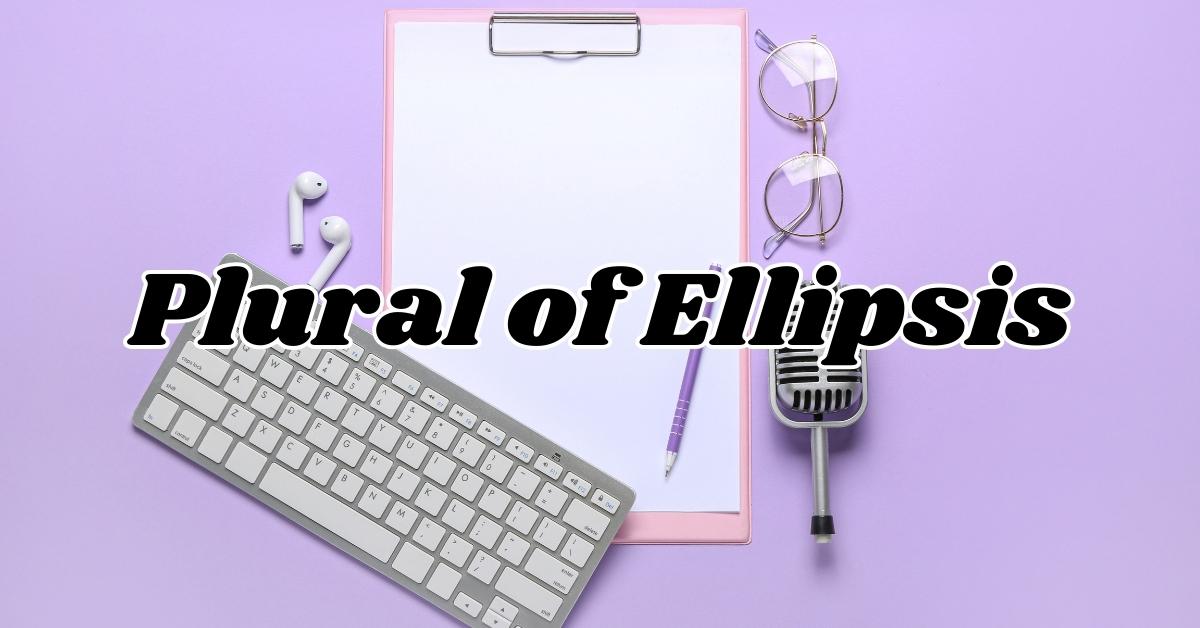Plural of ellipsis: Navigating the intricacies of English grammar can sometimes feel like traversing a labyrinth. One common point of confusion arises with the word “ellipsis.” Is the plural form “ellipsis” or “ellipses“?
This guide demystifies this grammatical conundrum, providing a clear explanation of the correct plural usage. We’ll delve into the definition of ellipsis, explore its origin, and examine its various applications in writing.
Understanding the difference between ellipsis vs ellipses is crucial for accurate and polished English writing. This article will equip you with the knowledge to confidently use ellipses in all your written communication, from casual writing to formal documents.
We’ll also touch upon related grammatical concepts, ensuring a comprehensive understanding of this essential writing tool.
Quick Summary
When discussing the plural of ellipsis, many people wonder whether to use “ellipsis” or “ellipses.” This confusion arises because both terms are used in different contexts, but understanding their correct usage is crucial for clear communication.
The plural form of ellipsis is indeed “ellipses,” which refers to multiple instances of this punctuation mark. In this article, we’ll delve into the nuances of using ellipsis vs ellipses, exploring their definitions, origins, and practical applications in writing.
Plural of Ellipsis
“Ellipses” is used when referring to more than one instance of an ellipsis. An ellipsis itself is a singular noun that represents three dots (…) used in writing to indicate omitted text or pauses.
For example, if you’re quoting someone and omitting parts for brevity, you would use an ellipsis; however, if your text includes several such omissions across different sections, you would refer to them collectively as ellipses.
Ellipsis as a Singular Noun in Example Sentences
In formal writing or casual conversations, an ellipsis can be used effectively to convey hesitation or trailing thoughts without completing a sentence fully.
For instance: “I was going there… but then I changed my mind.” Here, the single set of three dots constitutes one ellipsis, indicating a pause before continuing with another thought.
Ellipsis as a Plural Noun in Example Sentences
If your text includes multiple instances where parts are omitted using these three dots across different sentences or quotes within the same document each set being an individual ellipsis you would refer to them collectively as several ellipses: “The article included numerous quotes shortened by several strategic uses of ellipses.”
Understanding Ellipsis or Ellipses
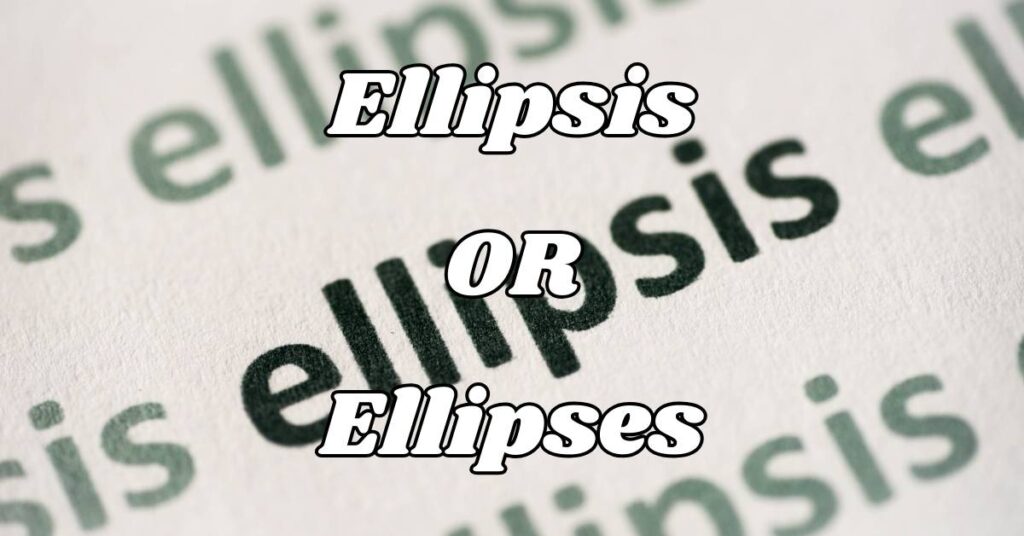
Understanding whether to use ellipsis or ellipses hinges on recognizing “ellipsis” as singular and “ellipses” as its plural form. This distinction mirrors other “-sis” to “-ses” pluralizations like “analysis” and “analyses.”
Correct usage is crucial for grammatical accuracy and clear communication. Confusing the two can detract from the professionalism and polish of your writing, so mastering this rule elevates your command of the English language.
Origins of the Ellipsis
The word “ellipsis,” originating from Greek, initially referred to a geometric shape. By the 1610s, its meaning expanded to encompass the grammatical omission of words for brevity, leaving the full meaning implied.
This omission requires a pause when reading aloud. Later, the typographical symbol (three periods) became associated with pauses or interruptions in dialogue, a usage that emerged in the 20th century, sometimes confusing.
Nouns that end in -sis/-ses
Many words ending in “-sis” in the singular form follow the same pluralization rule as “ellipsis.” This pattern is consistent across numerous words in the English language.
| Singular Noun | Plural Noun |
| Analysis | Analyses |
| Basis | Bases |
| Crisis | Crises |
| Hypothesis | Hypotheses |
| Thesis | Theses |
Ellipsis: Definition and Usage
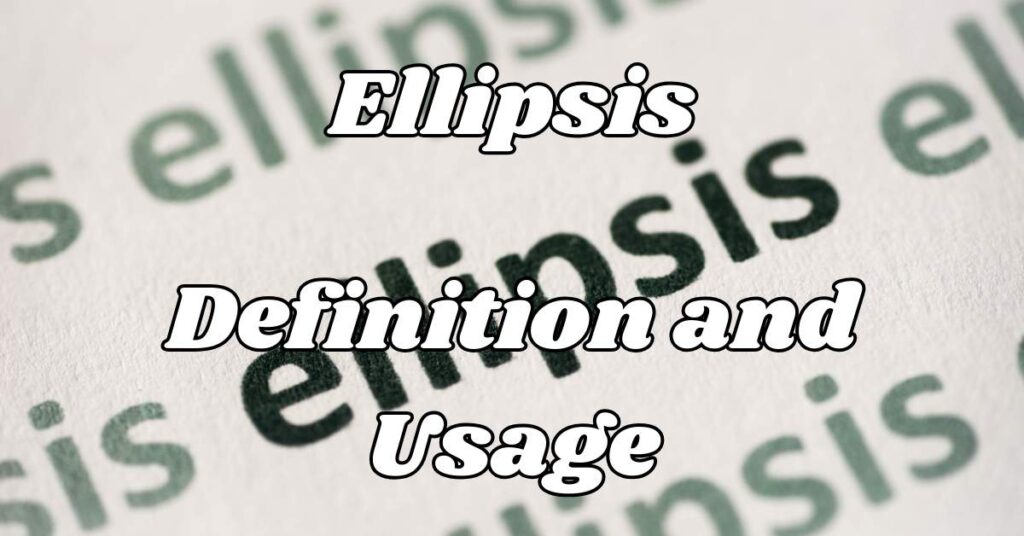
An ellipsis, denoted by three dots (…), signifies omitted words, phrases, or sections of text. It’s a versatile punctuation mark used to condense writing, create suspense, or indicate a pause in dialogue.
Beyond simple omission, an ellipsis can suggest an unfinished thought or a trailing off in speech. Understanding its proper usage is crucial for clear and effective communication, enhancing the flow and impact of written material. Ellipsis usage is a fundamental aspect of English grammar.
Ellipsis Meanings
The meaning of ellipsis extends beyond just omitting words. It can represent hesitation, uncertainty, or an implied continuation of a thought. In dialogue, it can depict a character’s trailing off or interruption.
Figuratively, it can create a sense of mystery or leave the reader to infer the missing information. The context surrounding the ellipsis is key to interpreting its intended meaning, adding layers of nuance to the written word.
Ellipsis Usage
Ellipsis usage is diverse, spanning various writing styles. In formal writing, it’s used to shorten quotes while preserving their essence. In informal communication, it can convey a casual tone or suggest unspoken thoughts.
Knowing when and how to use an ellipsis effectively is crucial. Overuse can make writing appear disjointed, while underuse might sacrifice conciseness. Mastering ellipsis usage enhances clarity and readability.
Singular Possessive of Ellipsis
The singular possessive of ellipsis indicates ownership or association. It’s formed by adding an apostrophe and “s” to “ellipsis,” creating “ellipsis’s.”
This possessive form is used when referring to something belonging to a single ellipsis. Understanding possessive forms is crucial for accurate English grammar.
Examples of Singular Possessive Form of Ellipsis:
- The ellipsis’s placement was strategic.
- The ellipsis’s meaning was ambiguous.
- He analyzed the ellipsis’s impact on the sentence.
- The ellipsis’s purpose was to create suspense.
- She questioned the ellipsis’s necessity.
Plural Possessive of Ellipsis
The plural possessive of ellipsis refers to something belonging to multiple ellipses. It’s formed by adding an apostrophe after the “s” in “ellipses,” resulting in “ellipses‘.” This form is less common but still essential for grammatically correct writing.
Examples of Plural Possessive Form of Ellipsis:
- The ellipses’ combined effect was powerful.
- The ellipses’ uses varied across different texts.
- He studied the ellipses’ functions in the poem.
- The ellipses’ positions were carefully chosen.
- She examined the ellipses’ role in creating ambiguity.
Synonyms of Ellipsis
While “ellipsis” is the standard term, here are some related words:
- Omission
- Abridgment
- Truncation
- Apostrophe
- Dash
- Pause
- Gap
- Lacuna
- Interruption
- Abbreviation
Ellipses Definition
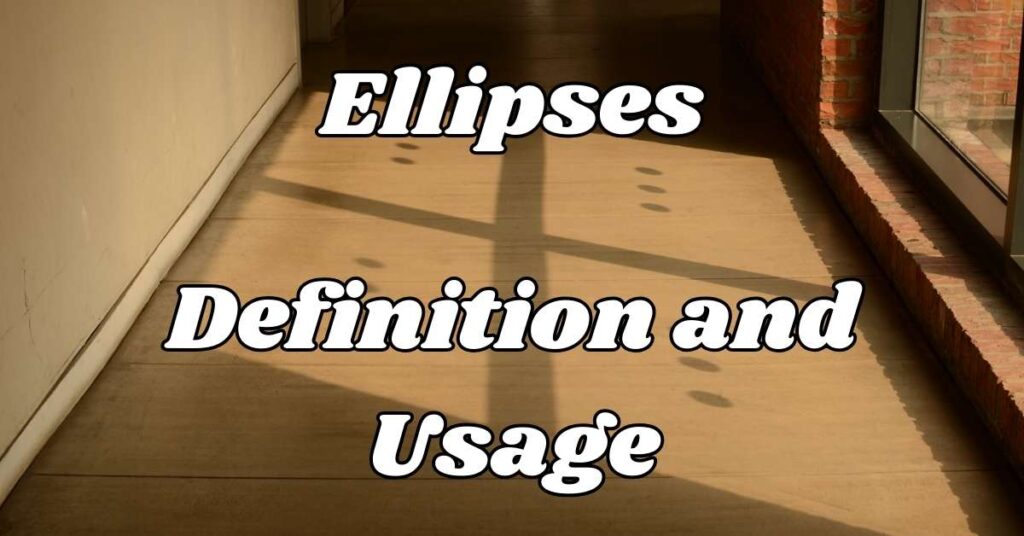
Ellipses definition: A series of three dots (…) used in writing or printing to indicate the omission of text, a pause, or an incomplete thought. It’s a punctuation mark that adds nuance and flexibility to written communication.
Side by Side Comparison Ellipsis or Ellipses
| Singular | Plural |
| Ellipsis | Ellipses |
| Example: The ellipsis is used. | Example: The ellipses are used. |
Everyday Usage Examples
Ellipses pepper our everyday language, adding nuance and informality.
Think of a text message: “I’ll be there… eventually” conveys a different tone than “I’ll be there.” Recipes often use ellipses: “Combine flour, sugar… and eggs.”
Even in formal writing, they can represent omitted sections of a quote, keeping the focus on the most relevant information. Understanding these common uses helps us appreciate the ellipsis’s role in conveying meaning beyond the explicitly stated words.
Example of Ellipsis in a Sentence
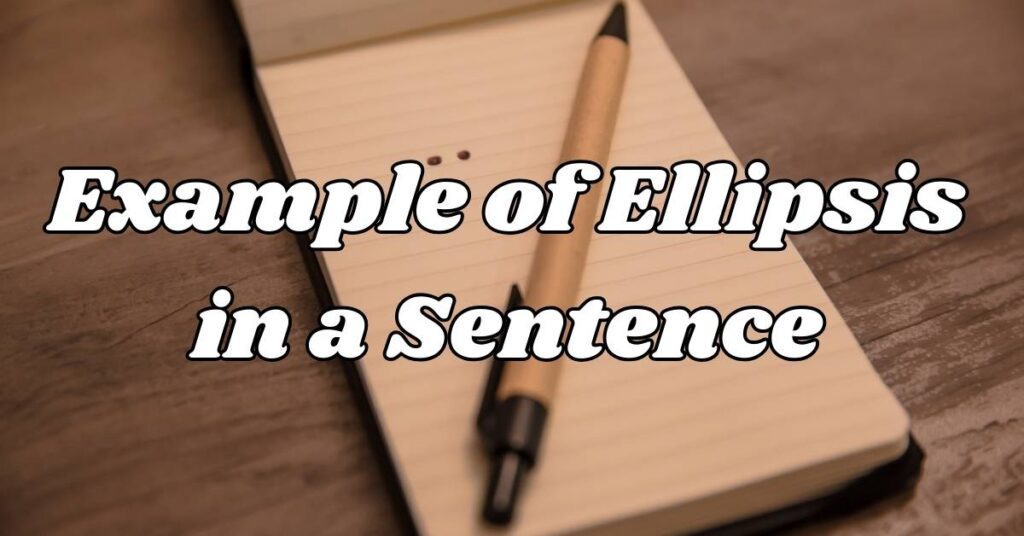
“Well… I suppose it’s time to go,” she murmured, a hint of reluctance in her voice. The ellipsis here suggests hesitation, an unspoken thought, or perhaps an unwillingness to fully express her feelings. It adds depth to the sentence, conveying more than just the literal words.
This subtle use of the ellipsis is a powerful tool for writers, allowing them to imply emotions and subtext without explicitly stating them.
More Article: Blaim vs Blame: What’s the Difference
FAQS: Plural of Ellipsis
Is it Ellipsis or Ellipses?
Ellipses is the correct plural form of ellipsis. Ellipsis is singular, while ellipses is plural.
Is “ellipsis” singular or plural?
“Ellipsis” is singular. Its plural form is “ellipses.”
Are ellipses grammatically correct?
Yes, ellipses are grammatically correct when used according to standard punctuation rules.
Why do boomers use ellipses?
While this is a generalization, some theorize that older generations may use ellipses more frequently due to a learned convention from older writing styles or to convey nuances in online communication.
Conclusion
Understanding the plural of ellipsis is fundamental to polished writing. While seemingly minor, the distinction between “ellipsis” and “ellipses” reflects a grasp of grammatical intricacies. Remember, “ellipses” is the correct plural form.
This knowledge empowers you to use this punctuation mark accurately, enhancing clarity and conciseness in your writing. Mastering such grammatical nuances elevates your communication, demonstrating attention to detail and a command of the English language. So, embrace the power of “ellipses” and let your writing shine.
Related Post: Usage or Useage: What’s the Difference?

